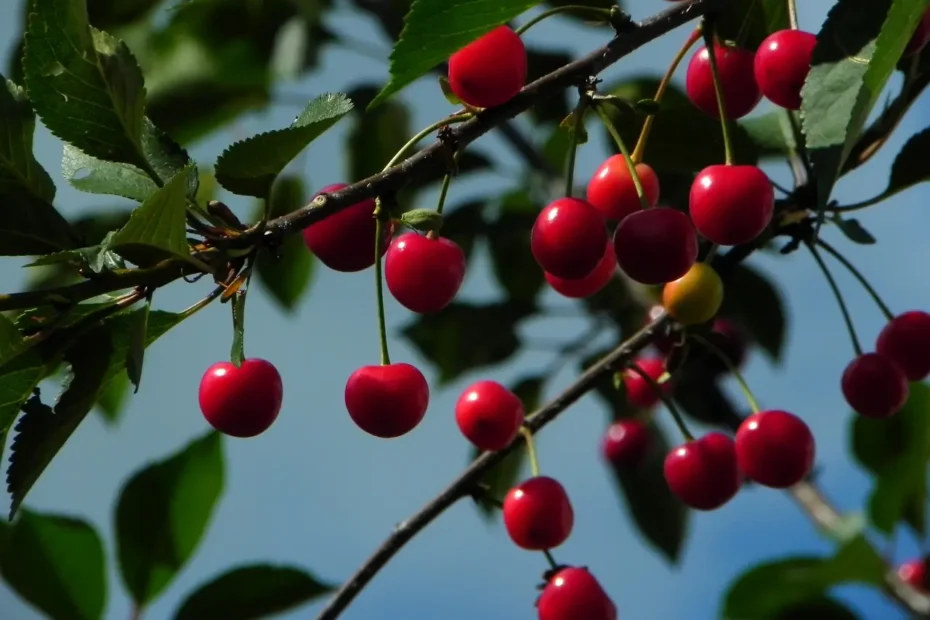Cherry trees produce beautiful blossoms in spring and delicious fruit in summer. But in order to set fruit, cherry trees need to be pollinated. This raises an important question for backyard orchard growers – are cherry trees self-pollinating?
What is Pollination?
Before diving into whether cherry trees can self-pollinate, it’s helpful to understand what pollination is and why it matters:
Pollination is the transfer of pollen from the anthers of a flower to the stigma. This transfer of pollen allows fertilization and the production of fruit. There are two main types:
- Self-pollination occurs when pollen from a flower pollinates the same flower or other flowers on the same tree.
- Cross-pollination happens when pollen gets transferred from one tree to a different tree.
Why does pollination matter? Pollination, whether self or cross, is vital for cherry trees to be able to set and develop fruit. Without pollination, the beautiful cherry blossoms will wither and drop off without producing any cherries.
Are Cherry Trees Self-Fertile?
Now let’s examine the question of whether cherry trees are self-fertile. Self-fertile refers to a fruit tree’s ability to set fruit through self-pollination without needing pollen from another tree.
Many cherry tree types are self-fertile, including:
- Sweet cherries: Lapins, Rainier, Stella
- Sour cherries: Montmorency, North Star, Meteor
However, self-fertile does not always mean self-pollinating. While some cherry trees may be capable of fertilizing their own flowers, environmental factors can still interfere with self-pollination and prevent fruit production. Let’s explore this further…
Do Cherry Trees Need Cross-Pollination?
Even though certain cherry trees are technically self-fertile, cross-pollination with another variety often improves fruit set and quality.
Why cross-pollinate cherry trees?
- Mitigates environmental risks like unusual weather
- Boosts overall pollination efficiency
- Produces larger, better quality fruit through hybrid vigor
That’s why most cherry trees, whether sweet or sour types, benefit from having another compatible cherry tree variety nearby for cross-pollination.
Here are some common self-fertile cherry tree pairing options:
| Cherry Tree Variety | Good Cross-Pollination Partners |
|---|---|
| Lapins | Stella, Rainier, Sweetheart |
| Rainier | Lapins, Sweetheart |
| Montmorency (sour) | North Star, Meteor |
As you choose cherry trees for your home orchard, consider compatible cross-pollination pairings.
Environmental Factors Affecting Cherry Tree Pollination
Assuming your cherry trees are either self-fertile and/or you have compatible varieties for cross-pollination, you also need the right environmental conditions for successful pollination.
Key factors that impact cherry tree pollination include:
Climate and Temperatures
- Cool springs can delay flowering. Desirable pollination temps are 60-80° F.
- Mid-season frosts can damage fragile cherry blossoms. Site trees to promote air flow.
Rain and Humidity
- Heavy rain, wind, or storms during bloom time reduces bee activity.
- Excess humidity increases chances of fungal diseases on flowers.
Sunlight and Air Flow
- Cherry trees need 6+ hours of direct sun for best flowering and fruiting.
- Good air circulation reduces disease and allows bees to access blossoms.
Bees and Other Pollinators
- Cherries primarily depend on bees for pollination. Avoid spraying pesticides during bloom time.
- If minimal bees, pollination rates can be low. Supplement with manual pollen dusting.
Paying attention to these environmental factors and adjusting orchard conditions can significantly improve success with cherry tree pollination season after season.
How to Ensure Proper Cherry Tree Pollination
Beyond selecting self-fertile varieties and providing the right growing conditions, here are proactive ways to achieve good pollination of your cherry trees:
1. Strategic Tree Placement
- Place different cherry tree varieties within 50 ft of each other for cross-pollination.
- Allow morning sun to hit blossoms, fewer shadows and better air flow.
**2. Pollinator Attraction **
- Install bee houses or insect hotels to attract native bees.
- Plant wildflowers among orchard trees. Bees love things like clover.
3. Manual Cherry Tree Pollen Transfer
- Hand dust flowers daily with tiny artist paintbrushes during bloom time.
- Collect pollen from male anthers, transfer to female stigma of different tree.
4. Flower Timing Manipulation
- Stagger planting dates between cherry tree varieties by 2 weeks.
- Prune early bloomers to delay flowering closer to late bloomers.
Using pollination aids often leads to noticeably better fruit crops. Don’t be shy to intervene!
Signs of Successful or Failed Pollination
To know whether your efforts are paying off, watch for these signs cherry blossoms got pollinated 2-4 weeks after flowering:
- Tiny green cherry fruits developing on branch spurs
- Official “June drop” after initial fruit set
- Expanding fruits not falling off branches
On the other hand, failed pollination may show these issues:
- Wilted, browning flowers falling off tree
- Lack of marble-sized green cherry fruits
- Complete summer crop loss
Diagnosing successful pollination earlier allows fixing problems in future seasons. Other factors like pests, diseases, weather can also cause fruit drop later.
Conclusion – Are Cherry Trees Self-Pollinating?
In summary – while many cherry tree varieties are technically self-fertile, most still benefit from cross-pollination and favorable environmental conditions for consistently maximizing yields. Natural self-pollination often proves unreliable.
Assisting pollination along with strategic tree placement, pollinator attraction, flower timing, and pollen transfer gives cherry blossoms their best shot at becoming a bountiful summer cherry harvest. Pay attention for signs of success after flowering!
With extra pollinator encouragement and a compatible companion variety nearby, both sweet and sour cherry trees can shower the home grower with a delightful crop of juicy, nutritious cherries.
